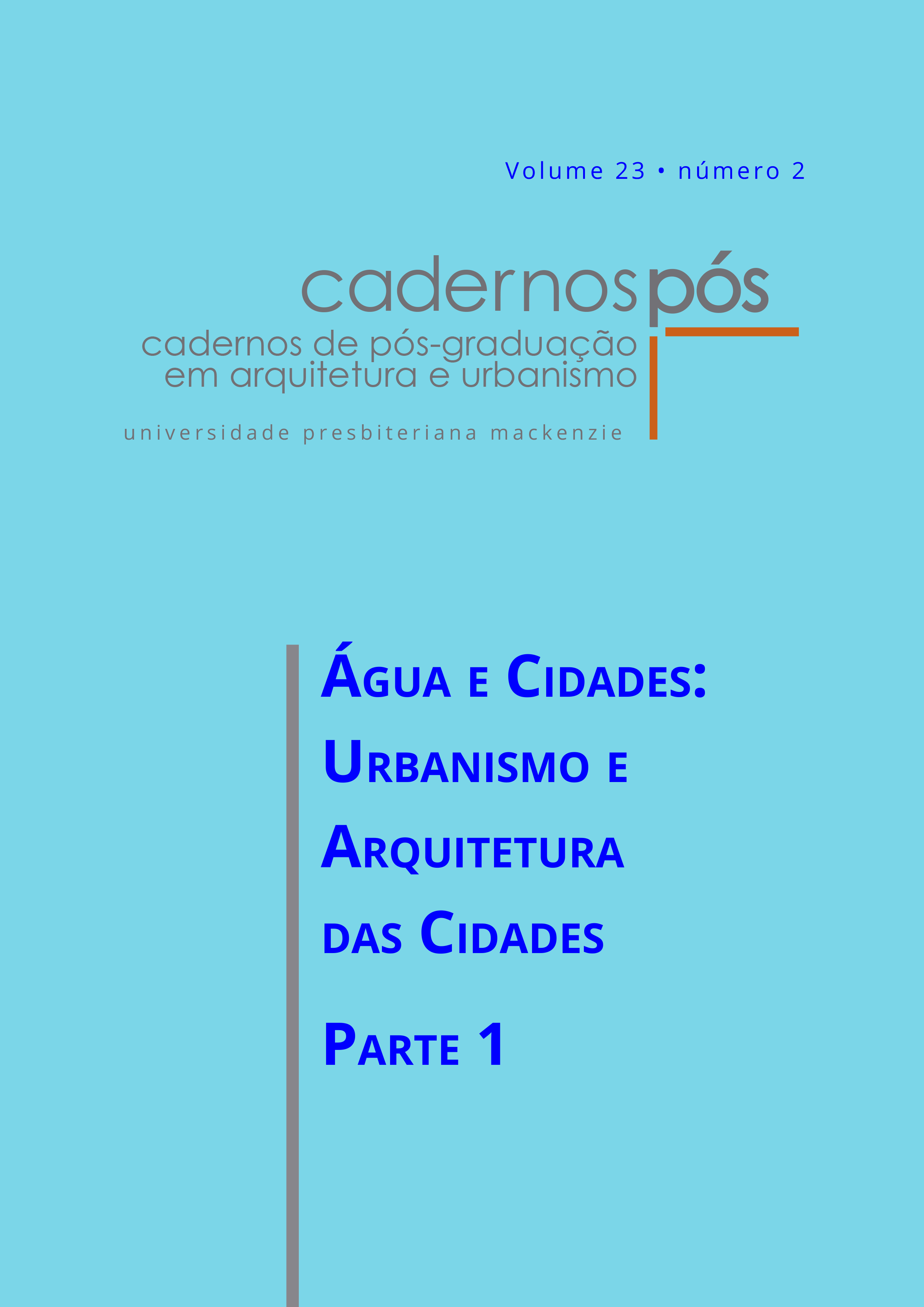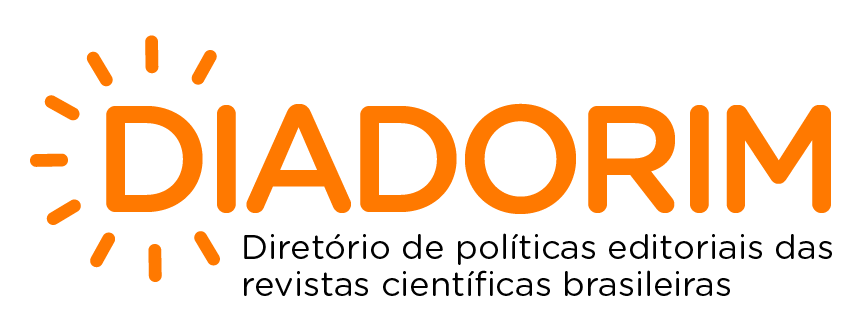Los componentes sociales e imágenes objetivo en la rehabilitación fluvial del río Piraquara, Realengo (RJ)
DOI:
https://doi.org/10.5935/cadernospos.v23n2p85-102Palabras clave:
Rehabilitación fluvial, Componentes sociales, Imágenes objetivo, Río PiraquaraResumen
Este trabajo aborda el desafío de equilibrar los objetivos naturales y urbanos en medio del borrado de cuerpos de agua e inundaciones desastrosas, sensibilizando a los agentes sociales involucrados en la transformación de los territorios. El foco está en la reinserción de los ríos en las ciudades, con énfasis en la recuperación de la memoria y la percepción de los paisajes fluviales y su impacto en los proyectos de restauración de ríos urbanos. La solución propuesta es un marco conceptual que incluye componentes sociales en imágenes prospectivas, denominadas imágenes objetivo. Este marco fue desarrollado a través de un proceso de cinco pasos, incluyendo diagnóstico general, compartimentación del territorio, investigación histórica, entrevistas cualitativas y aplicación del marco conceptual. El estudio de caso utilizado es la subcuenca del río Piraquara, en Río de Janeiro, resultando en una nueva estructura conceptual para reflexionar sobre posibles narrativas y repertorios culturales de los agentes sociales involucrados en proyectos de rehabilitación de ríos urbanos.
Descargas
Citas
BELL, S. D.; GRAHAM, H.; WHITE, C. L. Evaluating dual ecological and well-being benefits from an urban restoration project. MDP Sustainability, v. 12, n. 2, 695, 2020. https://doi.org/10.3390/su12020695
BURCH, C.; BUSCH, M.; HIGGINS, E.; BITTNER, S.; PERERA, N.; NEAL, K.; BURKETT, L.; CASTRO, A. J.; ANDERSON, C. Revisiting a Water Conflict in Southeastern Oklahoma 6 Years Later: A New Valuation of the Willingness to Pay for Ecosystem Services. MDPI Sustainability, v. 12, n. 3, 819, 2020. https://doi.org/10.3390/su12030819
CENTRO ITALIANO PER LA RIQUALIFICAZIONE FLUVIALE [CIRF]. La riqualificazione fluviale in Italia: linee guida, strumenti ed esperienze per gestire i corsi d’a acqua e il territorio. 1. ed. Venezia: Mazzanti Editori, 2006.
CORNER, J. Representation and landscape: drawing and making in the landscape medium. Word and Image: A Journal of Verbal/Visual Enquiry, v. 8, n. 3,
p. 243-275, 1992. http://doi.org/10.1080/02666286.1992.10435840
CORNER, J. The agency of mapping: speculation, critique, and invention. In: M. DODGE; R. KITCHIN; C. PERKINS (eds.). The map reader: theories of mapping practice and cartographic representation. New York: John Wiley & Sons, 2011. pp. 89-101. https://doi.org/10.1002/9780470979587.ch12
COSTA, R. N.; AZEVEDO, G. A. N.; PEDRO, R. M. L. Projetar-Com: o arquiteto como “autor-rede” em movimento. Gestão & Tecnologia de Projetos, v. 12, n. 2,
p. 103, 2017.
EUROPEAN UNION. EU Water Framework Directive (WFD). Commission Recommendation of 9 April 2013 on the use of common methods to measure and communicate the life cycle environmental performance of products and organizations. Official Journal of the European Union, Section L 327, p. 1-83, 2000.
FREIRE, D.; PEREIRA, L. L. História oral, memória e turismo cultural. In: UFMG (org.). Interpretar o patrimônio: um exercício do olhar. 1. ed. Belo Horizonte: Território Brasilis Consultoria, 2002. p. 121-130.
GINZBURG, C. Threads and traces: true false fictive. Los Angeles: University of California Press, 2012.
GUATTARI, F. As três ecologias. 11. ed. Campinas: Papirus, 2001.
HE, J.; PAN, Z.; LIU, D.; GUO, X. Science of the total environment exploring the regional differences of ecosystem health and its driving factors in China. Science of the Total Environment, v. 673, p. 553-564, 2019.
ILHA, A.; CASTRO, P. F. DE V.; PEDROSO, A. M.; SCHNEIDER, A. Trilhas: Parque Estadual da Pedra Branca. Rio de Janeiro: Inea, 2013. Disponível em: https://www.terrabrasilis.org.br/ecotecadigital/index.php/estantes/uso-publico-ecoturismo/2563-trilhas-parque-estadual-da-pedra-branca. Acesso em: mar. 2022.
JUNKER, B.; BUCHECKER, M.; MÜLLER-BÖKER, U. Objectives of public participation: which actors should be involved in the decision-making for river restorations? Water Resources Research, v. 43, n. 10, p. 1-11, 2007.
KONDOLF, G. M.; PINTO, P. J. The social connectivity of urban rivers. Geomorphology, v. 277, p. 182-196, 2017.
LEWIS, P. Axioms for reading the landscape. In: MEINIG, D. W. (ed.) The interpretation of ordinary landscapes: geographical essays. New York: Oxford: Oxford University Press, 1979. p. 11-32.
LYNCH, K. The image of the city. 1. ed. Cambridge: The MIT Press, 1960.
MARTINS, J. L.; AZEVEDO, J. P. S.; FIGUEIREDO, I. C. Estudo da qualidade hídrica da bacia do Rio Piraquara para análise da proposta de enquadramento do plano de recursos hídricos da região hidrográfica da Baía de Guanabara. Congresso Abes/Fenasan, n. 1, p. 1-8, 2017.
MCHARG, I. L. Design with nature. 2 ed. Philadelphia: The Flacon Press, 1971.
MINISTÉRIO PÚBLICO DO ESTADO DO RIO DE JANEIRO. In: Loco. [s.d.]. Disponível em: http://apps.mprj.mp.br/sistema/inloco/. Acesso em: 2 jun. 2022.
NARDINI, A. G. C.; CONTE, G. River Management & Restoration: what river do we wish for. MDPI Water, Switzerland, v. 13, n. 10, 1336, 2021. https://doi.org/10.3390/w13101336
NARDINI, A.; MIGUEZ, M. G. An integrated plan to sustainably enable the City of Riohacha (Colombia) to cope with increasing urban flooding, while improving its environmental setting. Sustainability, Switzerland, v. 8, n. 3, 2016.
OKAMOTO, J. Percepção ambiental e comportamento: visão holística da percepção ambiental na arquitetura e na comunicação. 2. ed. São Paulo: Plêiade, 1999.
OLIVEIRA, A. K. B. O sistema de drenagem como eixo estruturante do planejamento urbano: caso da Bacia Hidrográfica do Rio Acari. 2018. Dissertação (Mestrado em Engenharia Civil) – Universidade Federal do Rio de Janeiro, Rio de Janeiro, 2018.
PALMER, M. A.; BERNHARDT, E. S.; ALLAN, J. D.; LAKE, P. S.; ALEXANDER, G.; BROOKS, S.; CARR, J.; CLAYTON, S.; DAHM, C. N.; FOLLSTAD, SHAH, J.; GALAT, D. L.; LOSS, S. G.; GOODWIN, P.; HART, D. D.; HASSETT, B.; JENKINSON, R.; KONDOLF, G. M.; LAVE, R.; MEYER, J. L.; O’DONNELL, T. K.; PAGANO, L.; SUDDUTH, E. standards for ecologically successful river restoration. Journal of Applied Ecology, v. 42, n. 2, p. 208-217, 2005. Doi https://doi.org/10.1111/j.1365-2664.2005.01004.x
PINTO, P.; KONDOLF, G. M. The fit of urban waterfront interventions: matters of size, money, and function. MDPI Sustainability, Switzerland, v. 12, n. 10,
p. 1-17, 2020. https://doi.org/10.3390/SU12104079.
RAAPHORST, K.; ROELEVELD, G.; DUCHHART, I.; VAN DER KNAAP, W.; VAN DEN BRINK. Reading landscape design representations as an interplay of validity, readability, and interactivity: a framework for visual content analysis. Visual Communication, v. 19, n. 2, p. 163-197, 2020.
REES, R.; COSGROVE, D. E. Social formation and symbolic landscape. Geographical Review, v. 76, n. 1, p. 119-121, 1986. https://doi.org/10.2307/214798
RUQUOY, D. Situação de entrevista e estratégia do entrevistador. In: ALBARELLO, L. Práticas e métodos de investigação em Ciências Sociais. Lisboa: Gradiva,1997. p. 84-116.
SANTOS, B. S. A crítica da razão indolente: contra o desperdício da experiência.
ed. São Paulo: Cortez, 2002.
SANTOS, M. O território e o saber local: algumas categorias de análise. Cadernos Ippur, UFRJ, v. XIII, n. 2, p. 15-26, 1999.
STEINER, F. The living landscape: an ecological approach to landscape planning. Washington, DC: Island Press, 2008.
TUAN, Yi-Fu. Topofilia: um estudo da percepção, atitudes e valores do meio ambiente. Tradução Lívia de Oliveira. São Paulo: Difel, 1980. 288p.
ULLBERG, S. Watermarks: urban flooding and memoryscape in Argentina. 1. ed. Stockholm: Acta Universitatis Stockholmiensis, 2013.
VERÓL, A. P.; LOURENÇO, I. B.; FRAGA, J. P. R.; BATTEMARCO, B. P.; MERLO, M. L.; MAGALHÃES, P. C.; MIGUEZ, M. G. River restoration integrated with sustainable urban water management for resilient cities. MDPI Sustainability, Switzerland, v. 12, n. 11, 4677, 2020. https://doi.org/10.3390/su12114677
VERÓL, A.; BATTEMARCO, B. P.; SOUSA, M. M.; MIGUEZ, M. G. Requalificação fluvial: conceitos e casos de estudo. In: SCHIEBELBEIN, L. M. Gestão de recursos hídricos e sustentabilidade. 1. ed. Ponta Grossa: Atena, 2018. p. 17-33.
Descargas
Publicado
Cómo citar
Número
Sección
Licencia
Derechos de autor 2023 Julia Roizemberg Bahiana, Noêmia de Oliveira Figueiredo, Aline Pires Veról

Esta obra está bajo una licencia internacional Creative Commons Atribución 4.0.
Autores que publican en esta revista concuerdan con los siguientes términos:
a) Autores mantienen los derechos autorales y conceden a la revista el derecho de primera publicación, con el trabajo simultáneamente licenciado bajo la Licencia Creative Commons Attribution que permite la divulgación del trabajo con reconocimiento de la autoría y publicación inicial en esta revista.
b) Autores tienen autorización para asumir contratos adicionales por separado, para distribución no exclusiva de la versión del trabajo publicada en esta revista (ej.: publicar en repositorio institucional o como capítulo de un libro), indicando que fue publicado originalmente en esta revista, con el enlace del artículo.








 Todo o conteúdo de Cadernos de Pós-Graduação em Arquitetura e Urbanismo está licenciado sob
Todo o conteúdo de Cadernos de Pós-Graduação em Arquitetura e Urbanismo está licenciado sob 